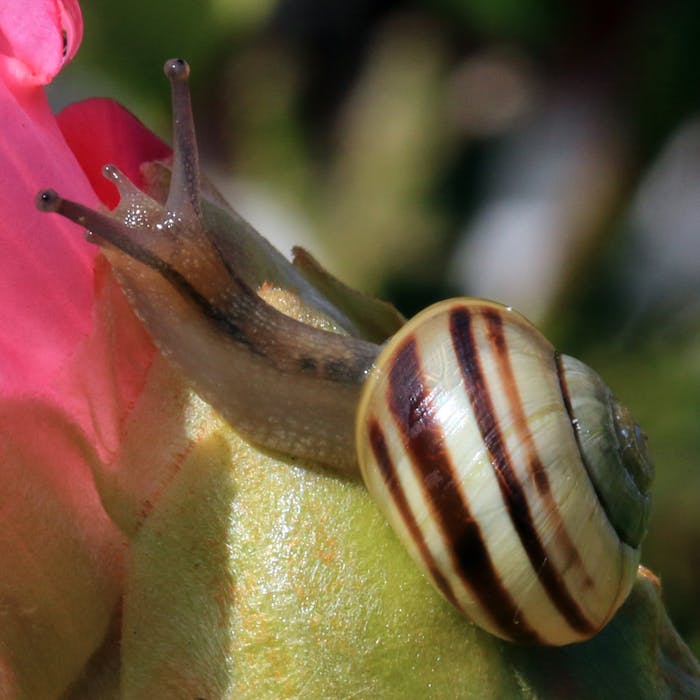
The White-lipped snail - the minty-looking one in the garden
Snails are annoying to gardeners, but some are quite pretty. That mint humbug-looking one commonly found amongst the plant pots is the White-lipped snail (Cepaea hortensis).
The White-lipped Snail lives in a variety of damp habitats, including gardens, hedgerows, woodland, grassland, wasteland, sand dunes and clifftops. It prefers to eat nettles, ragwort and hogweed. It is native to Western and Central Europe.
The White-lipped snail varies in colour, but is typically yellow or pinkish. It has up to five brown bands around the whorl of the shell. It can be identified by the white branding around the lip of its shell, which distinguishes it from the similar Brown-lipped snail.
White-lipped snails are hermaphrodites, so have organs of both sexes. However, they need to mate in order for each snail to fertilise their own eggs.
The breeding season takes place from spring to autumn. Courtship begins with a snail piercing the skin of its partner with a 'love dart' made of calcium carbonate. Once this ritual has taken place mating can begin. The snails then part ways and both partners lay their eggs buried in soil.
One clutch is usually over 100 eggs strong and takes around a month to hatch. Juvenile snails have a soft shell which hardens and grows with them as they mature.
The White-lipped Snail is widespread and common, especially on the Scottish coast. They are more tolerant of cold and wet conditions than their near-relatives, the Brown-lipped snail.
Further Reading
Links to external websites are not maintained by Bite Sized Britain. They are provided to give users access to additional information. Bite Sized Britain is not responsible for the content of these external websites.
